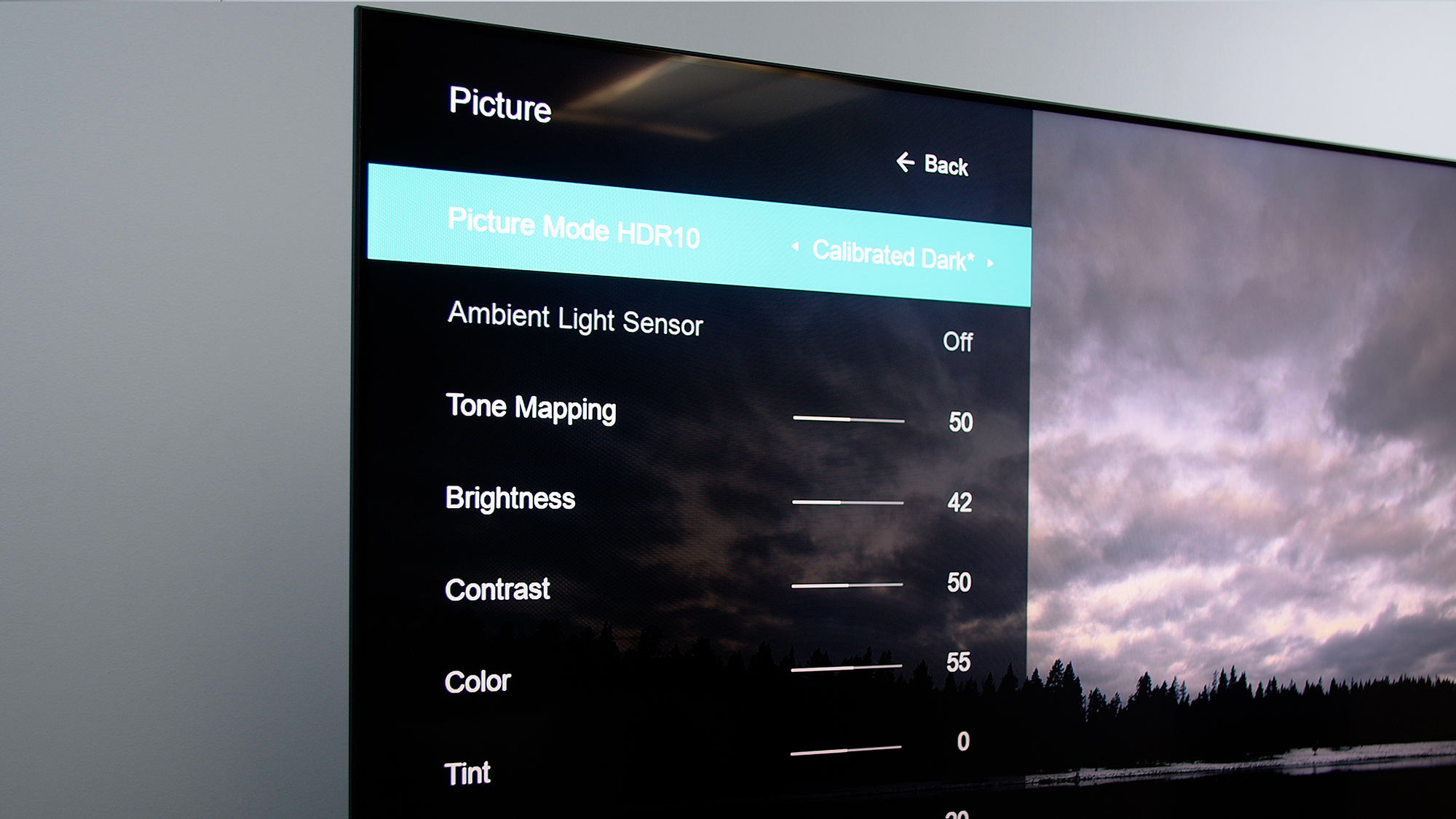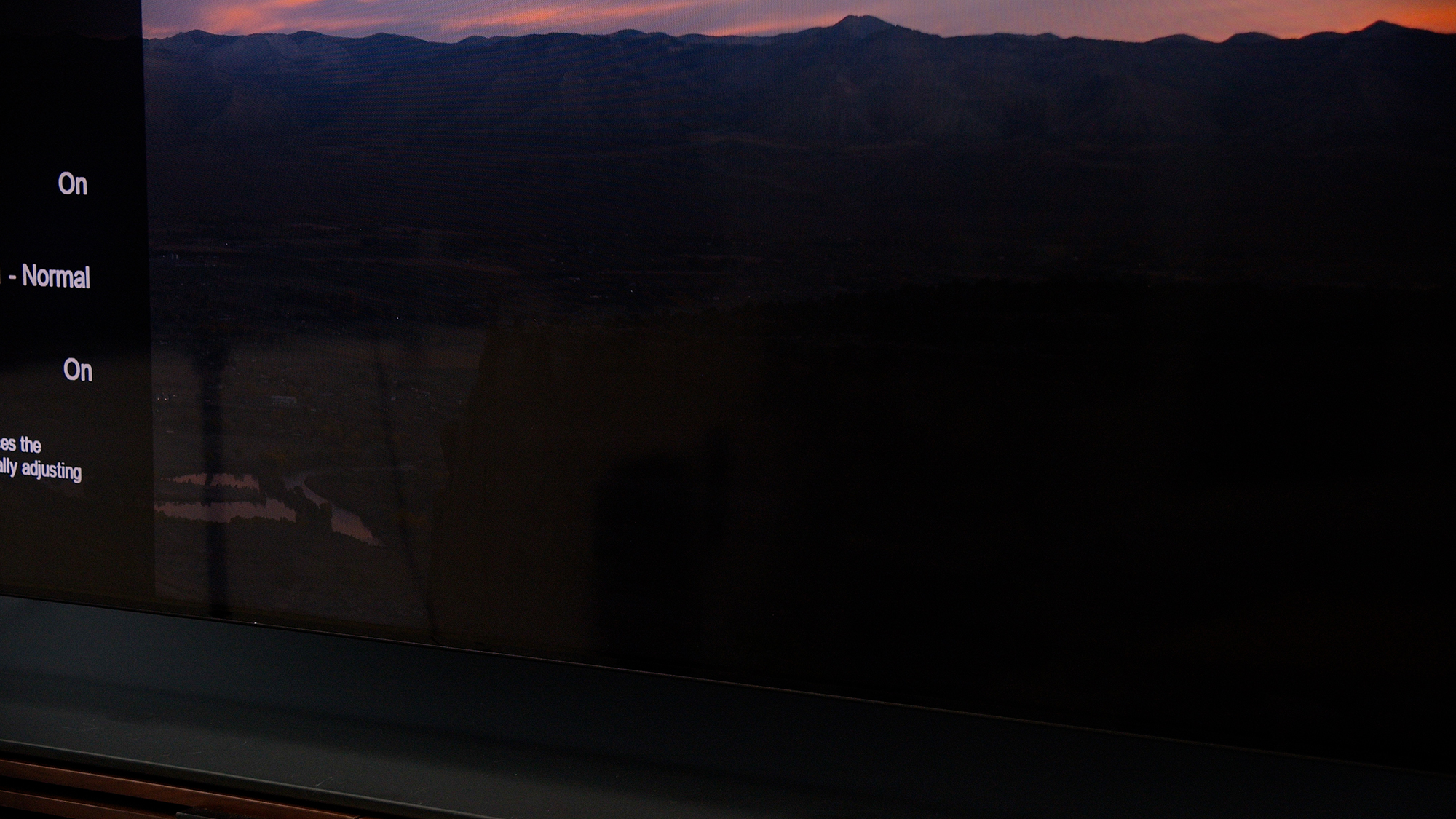- Incredibly bright TV
- Solid black levels
- Incredible price-to-performance ratio
- Good for gaming
- Red tint with out-of-box picture settings
- Calibrated Dark mode obscures shadow detail
When it comes to televisions, bigger is often better. But how about when it comes to brightness? We dive into the Vizio P-Series Quantum X 85-inch television (P85QX-H1) to find out.
Out of the box
For this review, we tested the 85-inch inch model because … why not? Vizio was kind enough to send along the massive, $2,500 TV and we figured it was a good opportunity to see how Vizio’s best looked at its biggest size.
The large scale of the TV did make setup a little trickier than usual in that Vizio suggests putting the TV on a large surface when installing the TV’s feet. Fortunately, we had a table just large enough to do so, and the TV ships with a large piece of protective cardboard that helps isolate the TV’s screen from whatever surface is used.

The feet themselves are of matte black metal design and install relatively easily. We suggest inserting both screws into their respective holes for each foot prior to tightening them — this avoids potential trouble with aligning the holes correctly.
Also in the box with the the TV, feet, and screws are a power cable, batteries, and Vizio’s remote control, which, by the way, is not a voice remote — use of a smart assistant with the TV will require a Google, Amazon Alexa, or Apple device or speaker.
The TV’s aesthetic design is fairly sleek, with very thin bezels and pleasantly textured edges. The rear of the TV is made of plastic that doesn’t ooze premium as one might expect from a flagship TV but, then again, Vizio isn’t asking for the same kind of bucks as its competitors.
Our only real design gripe is a lack of cable management.
Inputs
Vizio includes full-spec HDMI 2.1 inputs in the P-Series Quantum X, with a full 48Gbps of bandwidth — at least that is true now that Vizio has issued an update to the series of TVs. At the time of evaluation, we had trouble getting all HDMI 2.1 features to work when testing with a PlayStation 5 and Xbox Series X. More on the TV’s gaming prowess below.
Initial picture settings

The P85QX-H1, at 85 inches, is absolutely huge. But aside from the impressive size, how is the picture? The P85QX-H1 certainly is bright — up to 3000 nits. However, the brighter the whites got, the more a red tint started creeping in. While the issue can be addressed in the white balance settings, the fix took a lot longer than expected. Once that was rectified, the color coverage and accuracy measured very well. We’re just concerned some of the value goes out the window if a professional calibrator must be called in to pull the picture closer to accuracy.
Calibrated Dark mode vs. Calibrated mode
When it came to calibrated HDR content in Calibrated Dark Mode, many of the dark scenes we saw were just black. Bumping up the local dimming setting to medium didn’t help much, either — it just wasn’t great for dark scenes. Vizio says this is abnormal, but we weren’t able to identify a settings fix during our testing period.
However, when going to Calibrated (instead of Calibrated Dark Mode), the detail went up significantly, showing all the nuances we were supposed to be seeing instead of just the black swath of nothing we saw in Calibrated Dark Mode. But while the details were now visible, the color still needed correction and calibration.
Black levels and brightness

The PQX’s black levels are very good with the right settings. You get a good amount of shadow detail, and blooming is kept to a minimum most of the time. As for the brightness, well, it’s intense. The P85QX-H1 is quite good at pulling off HDR effects, and it’s pretty dazzling, even though some of the white clouds we were previewing were tinged pink without color correction. But the processing power the P85QX-H1 offers is spot-on.
The PQX’s black levels are very good with the right settings.
Backlight

The backlighting became an occasional issue. We found the TV’s backlighting algorithm/execution was a little slow to catch up with the demands of the content, and as a result, we saw slight brightness shifts on the screen that shouldn’t be there. Granted, it’s more obvious because the P85QX-H1 is simply so large, but it’s a visible issue that we couldn’t ignore.
Screen uniformity, motion, and processing

The screen uniformity on the P85QX-H1 we received was solid. As for motion, we did see some stuttering on challenging scenes like an evening fly-through of New York City — the buildings do stutter in their top-to-bottom movement. The good news is that we saw no moiré effect, which is a common issue when viewing this test clip — another sign of great processing.
That processing can also be noted through the lack of color banding, even with lower resolution and low bit-depth content. However, in some panning shots, while the motion was smooth, there was slight flashing in bright areas that we occasionally found distracting.
Audio

The audio quality on the P85QX-H1 is not bad — but it’s also not great. It has some decent low end, so it avoids the tinny sound found on many televisions. And while the speakers are located near the bottom and the back, the presence of the sound is such that it doesn’t sound like the sound is coming from behind the TV or from the bottom. Adding one of Vizio’s soundbars would be a great addition and would put the sound on par with the magnificence of the TV.
Gaming
The input lag of the P85QX-H1 is good, at about 13.5 to 14 milliseconds at 4K 60 frames per second with HDR turned on. Unfortunately, the P85QX-H1, like so many other TVs this year, didn’t pull off 4K 120Hz with 4:4:4 chroma at the time of testing. Fortunately, Vizio has since patched that issue with a firmware update, so Sony PS5 and Xbox Series X owners can now max out their video settings. Vizio’s gaming engine is now really good at communicating with those consoles, and it will get those settings right for you automatically.
The P85QX-H1 is capable of greatness, but it needs a bit of a helping hand to get there
Our take
We’re left with mixed feelings about the P-Series Quantum X. One minute it’s kicking ass and looking absolutely gorgeous, but the next minute, it will do something that puts us off in a way that’s difficult to articulate. A TV of this caliber shouldn’t need so much color correction out of the box. But once it is corrected, it does some amazing things — the brightness reveals colors that we’ve never been able to see before.
The takeaway here is that the P85QX-H1 is capable of greatness, but it needs a bit of a helping hand to get there. It needs some adjustment (and perhaps some cable management options), but once those are addressed, it can lead you into brilliant new visual territory.
Is there a better alternative?
Comparing the Vizio P-Series Quantum X to other TVs is made tricky by the fact that even though Vizio launched its new TV lineup at the end of 2020, the company is calling this its 2021 TV lineup, and they’ll be sticking around for the entire year of 2021. That being the case, we’ll update this section once competing 2021 models are released.
Compared to 2020 TVs currently available, the Vizio is extremely competitive in the price-to-performance category. This is one of the boldest, brightest TVs you can soon buy, comparing nicely to the Samsung Q90T, while costing $800 less than the Samsung at the 65-inch size. At 85-inches, the PQX comes in around $1,000 less than a comparably sized Samsung Q90T.
How long will it last?
Given the P-Series Quantum X is outfitted with HDMI 2.1 ports and seems well built, the TV should last for several years, quality control notwithstanding.
Warranty
Vizio provides a one -year warranty on its TV products. More information can be found on Vizio’s warranty page.
Should you buy it?
We’re going to say yes with the caveat that we strongly recommend a professional calibration of the TV. Without a calibration, the TV seems to display an obvious red tint that can’t be taken out with basic settings or guesswork in the two-point white balance adjustment section. Unfortunately, the cost of a professional calibration takes away some of the PQX’s value, but it will remain a more affordable high-performance TV option compared to competing TVs from the likes of Samsung, LG, and Sony.







